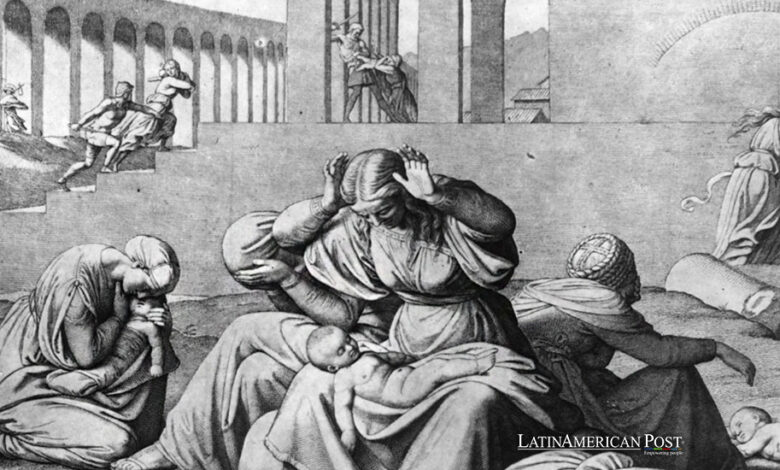The Dark Origins and Evolution of Dia de Los Inocentes’ Day

Dia de Los Inocentes’ Day, synonymous with playful pranks and humorous hoaxes, carries a history steeped in ancient traditions and religious events. Despite its lighthearted nature today, the origins of this tradition are surprisingly dark and multifaceted, spanning centuries of human history.
The modern observance of Dia de Los Inocentes ‘ Day is characterized by good-natured trickery and jests, often with individuals attempting to outwit their friends and loved ones with clever deceptions. However, beneath the laughter and amusement lies a complex tapestry of historical events, including religious rituals and societal customs, that have contributed to the evolution of this peculiar celebration.
Tracing Roots: Dia de Los Inocentes’ Connection to Ancient Rome
One must delve into the pages of history to trace the roots of Dia de Los Inocentes ‘ Day, where a connection to ancient Roman traditions can be discerned. The festivities of April 1st bear some resemblance to the Roman festival of Saturnalia, a period of festivity and role reversals characterized by jesters and merrymaking. While not a direct precursor, Saturnalia’s influence on later celebrations cannot be discounted.
A more explicit link to the origin of Dia de Los Inocentes ‘ Day can be found in religious events. In Christian tradition, April 1st is associated with the Feast of the Circumcision of Christ. This event commemorates the eighth day after Jesus’ birth when he was circumcised by Jewish law. The date holds significance within the Christian calendar, but it is not typically associated with humorous festivities.
The darker twist in the Dia de Los Inocentes ‘ Day tale emerges from the medieval interpretation of this solemn day. Some scholars posit that this tradition evolved from a custom known as “Feast of Fools,” which was practiced during the Middle Ages. During this occasion, usually held around the Feast of the Circumcision, the clergy and the laity would engage in role reversals, with the lower clergy often assuming the roles of their superiors.
From Religious to Secular: Dia de Los Inocentes’ Gradual Transition
In the Feast of Fools context, the “Lord of Misrule” would be appointed to preside over the festivities, and irreverent and comedic behavior was encouraged. This event blurred the lines between sacred and profane, with participants often indulging in pranks, parodies, and mockery of religious rituals.
As time progressed, the Church began to view such behavior as a subversion of established religious order and condemned the Feast of Fools. However, remnants of these celebrations persisted, subtly evolving into a day when playful deception and trickery became commonplace.
The transition from religious rituals to the more secular Dia de Los Inocentes ‘ Day was gradual. It took several centuries for the tradition to fully shed its religious connotations and embrace the spirit of jest and amusement. In the meantime, the day was known by various names, including “All Dia de Los Inocentes.”
By the 18th century, Dia de Los Inocentes ‘ Day had firmly established itself as a day for harmless pranks and jokes. England, in particular, played a significant role in popularizing these lighthearted antics, with newspapers publishing fictitious stories and individuals engaging in humorous hoaxes.
Inocentes and Poisson d’Avril: Dia de Los Inocentes’ Global Variations
“Inocentes ” emerged during this era, referring to the unwitting recipient of a prank. The aim was not to cause harm or distress but to create moments of laughter and amusement.
In France, the day is known as “Poisson d’Avril” or “April Fish.” The French tradition involves attaching a paper fish to someone’s back as a prank, and if they discover it, they are considered an “April Fish.”
Also read: The Argentine-Mexican Writer Sandra Lorenzano Wins the XV Málaga Essay Prize
In contemporary times, Dia de Los Inocentes ‘ Day has transcended borders and cultures, evolving into a global day of humor and playful deception. Media outlets, corporations, and individuals embrace the occasion to craft elaborate pranks and imaginative jests. While the origins of this day may be rooted in a darker past, it has since blossomed into a cherished tradition that invites people to indulge in harmless fun and celebrate the joy of laughter.
